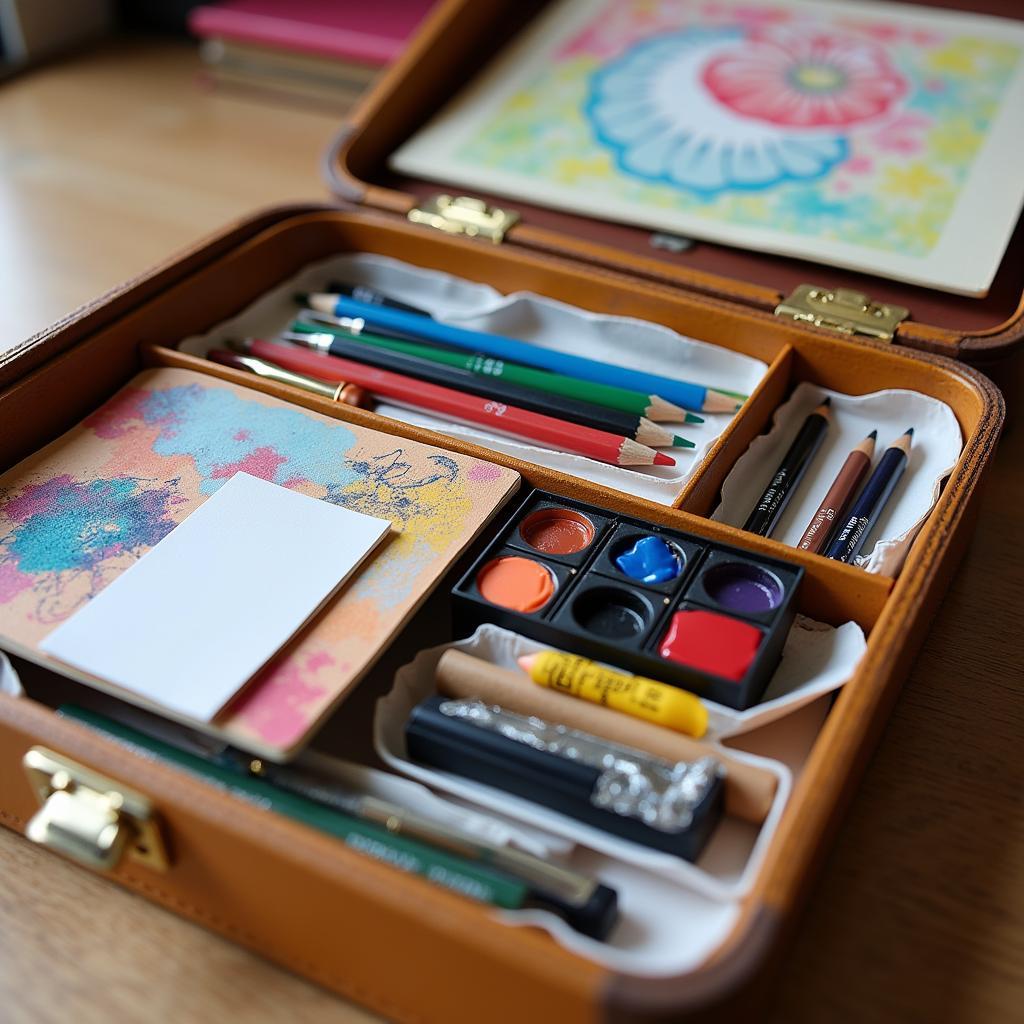3D Art Pieces: Unleashing Creativity in a Digital World
3D art is no longer a niche, it’s becoming a mainstream force in the world of art. We are surrounded by 3D models in games, movies, and even our everyday lives. The demand for talented 3D artists is growing, with endless opportunities for creativity and innovation. This article dives into the captivating world of 3d Art Pieces, exploring their creation, significance, and how they are transforming the visual landscape.
What are 3D Art Pieces?
3D art pieces are digital creations that exist in a three-dimensional space. They are created using specialized software that allows artists to manipulate virtual objects, textures, and lighting. The result is a visually immersive experience that can bring artistic visions to life in incredible detail.
The Magic of 3D: A Closer Look
Breaking the Boundaries of Reality
Unlike traditional art forms confined to a flat surface, 3D art pieces transcend the boundaries of reality. They offer unparalleled depth, perspective, and realism. 3D artists can create anything they envision, from fantastical creatures to surreal landscapes, pushing the limits of imagination.
A Journey Through Interactivity
3D art pieces can be interactive, allowing viewers to explore and engage with the artwork. They can rotate, zoom, and even change their appearance in response to user interaction, creating a dynamic and immersive experience. This interactivity adds another layer of depth to the art, blurring the line between observer and participant.
The Power of 3D in Various Fields
3D art has transcended its role as a mere aesthetic pursuit. It has become a powerful tool used across various fields, including:
- Film and Animation: 3D models and animation bring fictional characters and environments to life on the big screen, captivating audiences with incredible realism.
- Gaming: 3D art plays a crucial role in video game development, creating detailed worlds, characters, and environments that enhance gameplay and immerse players in the game world.
- Architecture: 3D models allow architects to visualize and present their designs in a comprehensive and realistic way, enabling better communication and collaboration with clients.
- Medicine: 3D printing technology, powered by 3D models, is revolutionizing medical practices, enabling the creation of customized prosthetics, implants, and surgical tools.
Crafting 3D Art Pieces: A Behind-the-Scenes Look
The Tools of the Trade
The creation of 3D art pieces involves a combination of software, skills, and artistic vision. Some of the popular 3D modeling software used by professionals include:
- Blender: Open-source and free, Blender offers a wide range of tools for 3D modeling, animation, and rendering.
- Maya: Widely used in film and animation, Maya offers a robust and powerful set of tools for creating high-quality 3D models.
- ZBrush: A specialized tool for digital sculpting, ZBrush allows artists to create highly detailed models with incredible realism.
From Idea to Reality
The process of creating a 3D art piece typically involves the following steps:
- Conceptualization: Artists start by developing a clear vision for their artwork, sketching out ideas and exploring various design concepts.
- Modeling: Using 3D modeling software, artists build the 3D models based on their initial sketches, paying close attention to form, detail, and proportions.
- Texturing: Artists apply textures to the models, creating a sense of surface material, color, and detail. This adds realism and visual depth to the artwork.
- Lighting: Properly applied lighting helps to create mood, atmosphere, and enhance the overall aesthetics of the 3D art piece.
- Rendering: The final step involves rendering the 3D model, converting it into a final image or video file. This process involves simulating light and shadow to create a realistic final output.
The Future of 3D Art
As technology continues to advance, the boundaries of 3D art are expanding. New techniques and tools are emerging, pushing the limits of what’s possible. We can expect to see even more innovative and captivating 3D art pieces in the future, blurring the line between the digital and the real.
“3D art is a dynamic field that constantly evolves. As technology advances, we can anticipate even more innovative and immersive 3D art experiences.” – Amelia Davis, renowned 3D artist.
“The beauty of 3D art lies in its ability to bring imagination to life. It’s a medium that can capture the essence of ideas and emotions, and share them with the world in a truly captivating way.” – John Peterson, 3D art curator.
FAQ
1. What are the different types of 3D art?
There are various types of 3D art, including 3D modeling, 3D animation, 3D printing, and 3D visualization. Each type has its unique applications and creative possibilities.
2. Is 3D art difficult to learn?
Learning 3D art requires dedication and practice. It’s a skill that can be mastered over time with the right resources and guidance. There are many online tutorials and courses available to help beginners get started.
3. What software do I need to create 3D art?
There are various 3D modeling and animation software programs available, including Blender, Maya, ZBrush, and Cinema 4D. The best choice depends on your specific needs and experience level.
4. How can I get started with 3D art?
Begin by exploring online tutorials, watching videos, and experimenting with different software programs. Practice regularly and seek feedback from experienced artists to refine your skills.
5. What are the career opportunities in 3D art?
There are numerous career opportunities in 3D art, including film and animation, game development, architecture, and medical visualization. The demand for skilled 3D artists is growing, with diverse career paths available.
Need Help Getting Started with 3D Art?
Contact us at 02462573573 or [email protected]. We offer 24/7 customer support and have a team of experts ready to help you embark on your journey into the world of 3D art.



